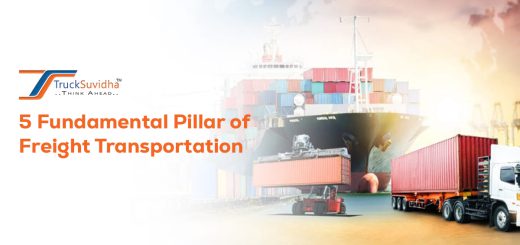Top 11 Key Factors Affecting Freight Rates
The term ‘freight rates ’ refers to the remuneration for haulage of shipments from origin to destination and is influenced by certain variables. Among these major factors are transportation mode, distance, size and weight of the parcel, oil price, and seasonal variations in demand. The economic environment, market regulation policies, and the nature of goods carried all play significant roles in shaping freight rates at these prices. Businesses must know these factors to control their transport costs.
11 Key Factors Affecting Freight Rates
Transport Mode
The means of transporting the consignment is one of the primary factors that influence freight costs. Premium services, for instance, airfreight or overnight delivery, cost more than ocean transport, which takes longer but is cheaper. This is because faster modes require more resources to move goods quickly. Slower modes like trains and ships can transport large volumes efficiently.
In general, air freight has the highest rates, followed by trucking. Ocean shipping and rail tend to be cheaper per unit than air and truck. However, each mode has pros and cons related to speed, flexibility, tracking capabilities, and accessibility. Companies choose shipping modes based on factors like required delivery timelines, cargo type, and destination accessibility.
Fuel Prices
Transportation modes like road, air, and sea freight are strongly impacted by the volatility of fuel prices as the cost of fuels constitutes one of the major components of the rates charged for the different services. The operating expenses of transportation companies are directly dependent on the price of fuel. This, therefore, causes an increase in freight rates with the rise in fuel costs. Carriers increase their rates when oil prices increase to recoup any extra expenses incurred in purchasing fuel.
On the other hand, the situation is different with low fuel costs, as these make it possible for carriers to offer low rates and maintain healthy profit margins.4 Fuel surcharges are often included in the freight invoices to cater to the changing prices of fuel during a shipping contract.
Driver Shortages
The ability to find skilled truck drivers and delivery people also impacts freight charges in the trucking and last-mile delivery segments. Due to an increase in demand for drivers, driver shortages cause an increase in rates, as pay for the drivers will have to be raised to entice enough drivers to work. When there are fewer drivers available, transportation companies cannot handle the same capacity. Limited capacity enables providers to charge higher rates.
Geography & Shipping Lanes
Freight rates vary based on geographical factors and popular shipping lanes. Longer distances generally incur higher freight rates, as more time and fuel are required. Rates also fluctuate based on supply and demand within certain regions. For example, fewer carriers service routes to remote areas, which leads to increased prices. Conversely, higher competition exists between major ports. Carriers sometimes lower rates on high volume and high competition routes. Landlocked countries also face increased rates, as they must cross borders to access ports.
Also Read:- 5 Tips for Flatbed Freight Shipping
Trade Imbalances
Imbalances in trade between two geographic areas impact freight costs. Trade imbalances occur when a country or region imports more than it exports to a trade partner. This leads to an excess of empty containers and vessels needing to return. To compensate for the unused capacity, carriers raise rates on imports. The lack of exports makes it difficult to balance the costs of round-trip transport.
Regulations
Government policies like taxes, tariffs, and customs procedures influence operating costs and transit times. These factors ultimately increase freight rates. For example, new security requirements can slow down processing times at ports and border crossings. Delays result in higher costs for carriers. Some countries also impose duties and taxes on cross-border shipments.
Insurance & Risk
The amount of risk involved with shipping to a particular destination also impacts rates. Transporting goods to regions with higher crime, instability or inclement weather increases insurance costs. Carriers factor additional risk and insurance fees into their rates.
Economic Conditions
The overall state of the global and local economies affects the supply and demand dynamics in the freight industry. Strong economic growth and manufacturing activity increase demand for freight services. Limited supply and heightened demand drives rates upward.
Conversely, economic recessions and reduced consumer spending lead to decreased freight volumes. Excess capacity causes carriers to lower rates to spur demand. However, carriers also consolidate services and raise rates to counteract reductions in freight volumes.
Shipping Densities
Freight density, or the mass per cargo volume, determines how much can fit in a single shipment. Dense products like metals take up less space, allowing more cargo per container. This results in lower freight rates, as carriers can maximize loads. In contrast, low-density cargo like fabric or air requires more containers per item. Less efficient space usage increases rates.
Seasonality
Freight rates fluctuate based on the time of year and corresponding seasonal demand spikes. For example, rates increase leading up to holidays as retailers rush to stock inventories. Similarly, agricultural goods have seasonal harvesting patterns that impact shipping volumes. Carriers implement higher rates during predicted peak seasons to offset the imbalance in supply and demand.
Contract Terms
The specifics of each transportation contract also influence pricing. Discounts are offered for regular customers committing to long-term partnerships with carriers. Companies that consistently ship high volumes year-round typically negotiate lower rates. One-time spot shipping customers pay much higher rates. Multi-modal contracts combining services may provide additional savings over individual routing requests.
Conclusion
In summary, freight rates are impacted by factors like mode of transport, fuel costs, geography, trade flows, regulations, risks, economic conditions, cargo density, seasonality, and customer contracts. Understanding these key influencers provides insight into managing freight spend. Shippers can optimize logistics by planning around busy seasons, consolidating shipments, exploring alternate modes or routes, and negotiating favorable contract terms.




Recent Comments